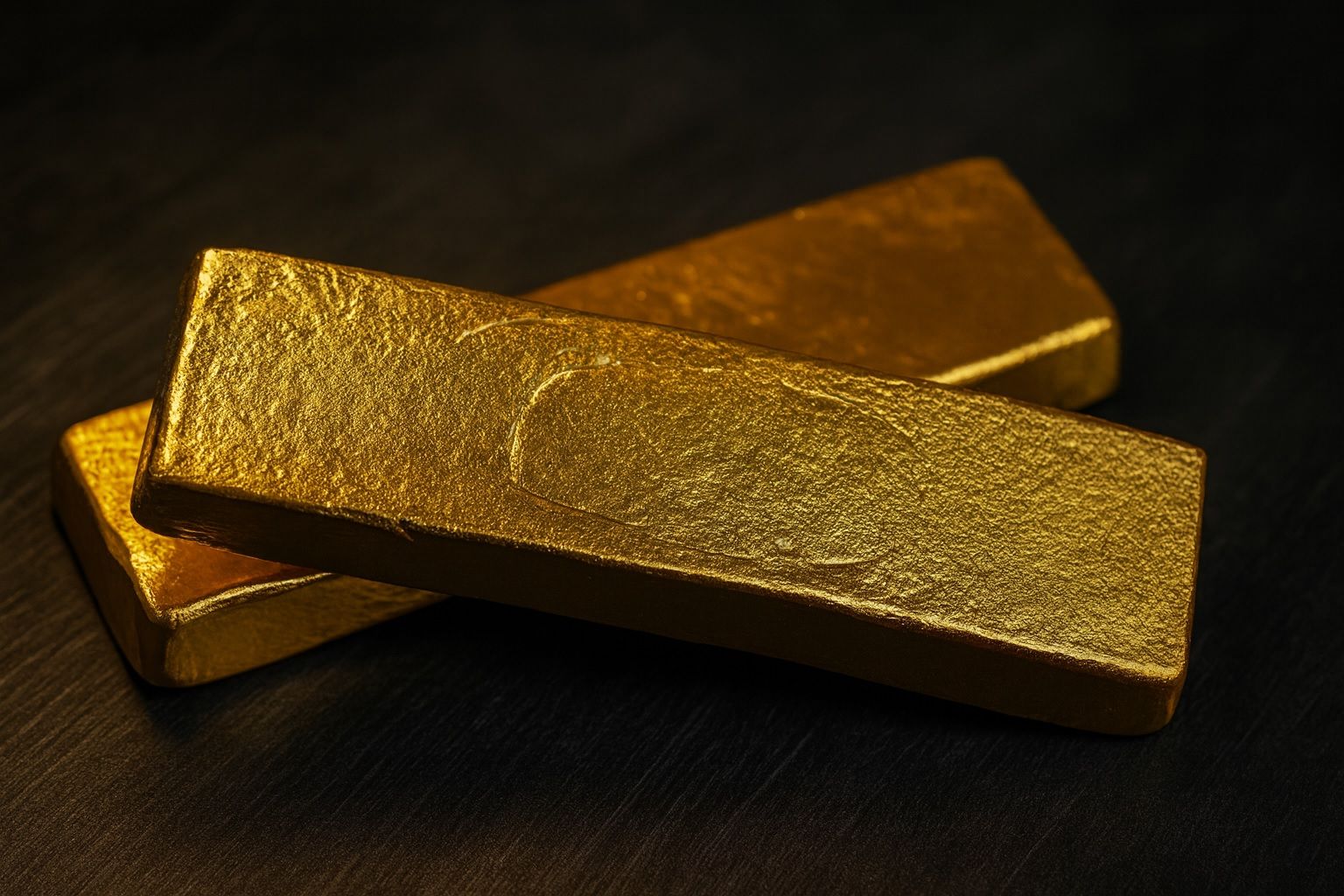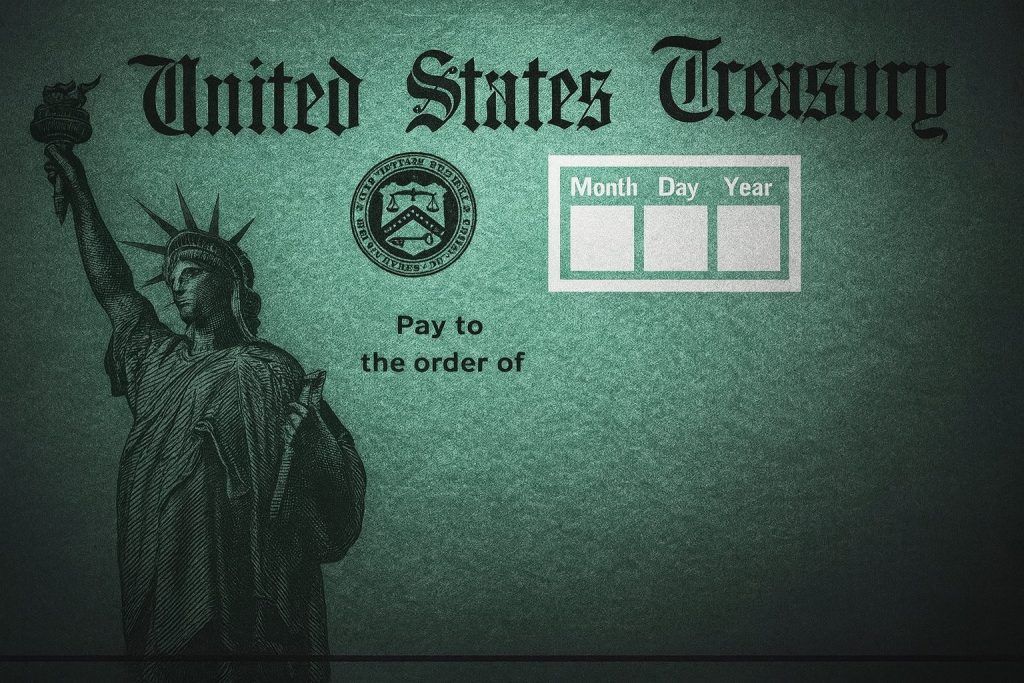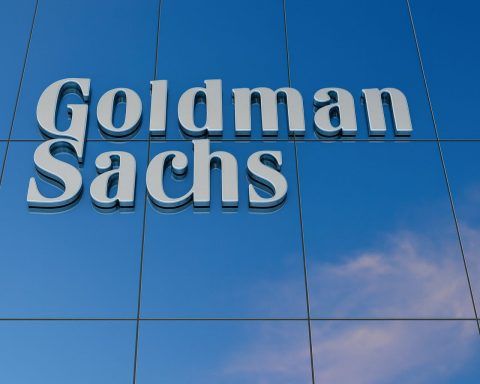- Historic High: Gold prices surged above $4,000 per ounce for the first time ever in early October 2025, marking a record high amid a rush into safe-haven assets [1]. The metal has leaped about 53% in 2025, far outpacing the S&P 500’s ~15% gain year-to-date [2]. Gold touched an intraday peak around $4,078 on Oct. 8 [3].
- Flight to Safety: This gold rally is fueled by growing investor unease over economic and political stability [4]. Analysts say mounting uncertainties – from a U.S. government shutdown and policy turbulence in Washington to ongoing geopolitical conflicts – have spurred a historic flight to safety [5] [6]. Investors are flocking to gold as an “insurance” hedge against potential crises like high debt, war, and a weakening dollar.
- Unusual Backdrop:Stock markets have been soaring alongside gold, an atypical scenario. The S&P 500 and Nasdaq hit record highs in early October amid euphoria over artificial intelligence breakthroughs [7]. (Chipmaker AMD’s stock, for example, jumped 24% in one day after a blockbuster AI deal with OpenAI [8].) Yet the simultaneous surge in gold suggests underlying anxiety – as one analyst noted, gold’s unbelievable rise signals “something bad is happening and that we should be nervous” [9] despite the stock market’s strength.
- Big Buyers Driving Demand:Central banks and investors worldwide are piling into gold. Global central banks are on pace to buy roughly 1,000 tons of gold in 2025, a fourth straight year of massive accumulation [10]. Gold-backed ETFs saw record inflows (over $26 billion in Q3 alone) and retail demand is so strong that some dealers have even sold out of gold bars within hours [11] [12]. This broad-based buying has created a solid floor under the market, though some warn it “has limits” [13] [14].
- Outlook – More Upside or a Bubble? Many experts believe gold’s run may not be over yet. UBS now projects prices reaching about $4,200/oz in coming months [15], and Goldman Sachs forecasts $4,900 by 2026 [16]. Billionaire investor Ray Dalio even recommends holding up to 15% of a portfolio in gold for diversification, noting it’s one asset that “does very well when the typical parts of the portfolio go down” [17] [18]. However, analysts urge caution against “all-in” bets – gold can be volatile (±10–15%), and its safe-haven appeal could fade if conditions stabilize [19].
Gold Blasts Past $4,000 in an Unprecedented Surge
Gold’s climb has been nothing short of spectacular – shattering its all-time high and crossing the psychologically important $4,000 threshold for the first time. On October 7, prices breached $4k/oz and kept rising into October 8, when gold peaked near $4,078 [20]. This milestone comes after numerous records were broken in recent months; gold was only around $2,800 at the start of 2025, making the current price nearly 50% higher in under a year [21]. “$4,000 an ounce seemed far-fetched at the start of the year… but after a ~50% rally, here we are,” remarked Bret Kenwell, an investment analyst at eToro [22]. In fact, gold’s year-to-date gain of ~53% has vastly outpaced stocks – by comparison, the S&P 500 index is up about 15% in 2025 [23].
Market watchers say gold’s record run reflects something deeper than just speculative fever. “The reasons behind the shiny metal’s surge may be less than dazzling,” CBS News noted – instead of exuberance, it “reflects growing unease” about the economy and politics [24]. In other words, investors appear to be buying gold not because everything is great, but because they are hedging against things going wrong. Despite a strong economy on paper and stock indexes at highs, gold’s rise suggests a stealth demand for safety amid potential storm clouds. As one commodities director put it, the rally is “unbelievable” and signals “something bad is happening and that we should be nervous” [25].
Flight to Safety Amid Economic and Political Jitters
Analysts cite a “perfect storm” of anxiety-inducing factors driving investors into gold’s warm, glimmering embrace. Foremost is the climate of economic uncertainty and political dysfunction. In the U.S., a federal government shutdown has been unfolding – now entering its second week as of early October – which underscores fiscal dysfunction in Washington [26] [27]. “The situation in Washington has reminded investors that political promises do not equate to financial security. Gold represents protection from that uncertainty,” observed Nigel Green, CEO of deVere Group [28]. The shutdown not only raises concerns about fiscal stability, it has also blinded markets by halting the release of key economic data (since agencies are closed), making it harder to gauge the economy’s health [29]. According to Convera strategist Kevin Ford, the data freeze has “severely diminished visibility” on the U.S. economy, a material headwind in itself [30].
Beyond the shutdown, investors see warning signs on the economic horizon. The U.S. economy is still growing, but there are potential headwinds that give pause – including the impact of renewed tariffs/trade tensions and a cooling job market [31]. With former President Donald Trump back in office in 2025, uncertainty around tariffs and policy has increased; one report noted that confusion over Trump’s tariff and immigration policies has been a significant factor behind gold’s rise as investors seek stability [32]. Meanwhile, S&P Global estimates the shutdown itself could shave off 0.1–0.2% of GDP per week it lasts [33], adding to slowdown fears. All of this has made gold – a tangible asset unbound by any government – more appealing as a safe store of value when faith in other assets or institutions is wavering.
Crucially, global geopolitical tensions are turbocharging gold demand as well. Ongoing wars and conflicts have rattled investors on multiple fronts. In Europe, Russia’s war in Ukraine continues unabated, Europe’s largest conflict since WWII, keeping the continent on edge [34]. And in the Middle East, a new Israel–Hamas war erupted this fall, with fighting extending beyond Gaza and threatening regional stability [35]. Each new headline of turmoil – whether it’s fighting overseas or political strife at home – seems to funnel more money into gold. “Right now, everything that is a traditional gold driver is happening,” explained David Wilson of BNP Paribas [36]. In other words, all the classic fear factors – war, political gridlock, economic uncertainty – have converged, creating a potent flight-to-safety frenzy for precious metals. The overall sentiment can be summed up simply: when in doubt, buy gold.
Notably, this rush isn’t limited to gold alone. Other perceived safe havens have also skyrocketed, underscoring how deep the nerves run. Silver prices have climbed in gold’s slipstream – up roughly 60% this year, with silver nearing ~$48/oz (its highest level in 14 years) [37] [38]. Even Bitcoin – often dubbed “digital gold” – briefly surged to around $125,000 per coin, reflecting a similar bid for alternative stores of value amid fiat currency worries [39]. Fear-driven money is flowing into any asset perceived as a refuge, with gold at the forefront.
Stocks at Record Highs – A Strange Parallel Rally
One striking aspect of gold’s rise to $4,000 is that it’s happening alongside a roaring stock market – an unusual tandem that has left some experts puzzled. Typically, gold shines brightest when stock markets are tumbling or economic data turns grim. Yet so far in 2025, equities have been on fire: the Nasdaq and S&P 500 both notched all-time highs in early October [40], fueled by optimism around technology and artificial intelligence. In fact, on October 6 the S&P 500 and Nasdaq closed at fresh record levels, capping an extended rally [41]. The next day (Oct. 7), Wall Street only slightly pulled back from those peaks – the S&P slipped 0.4%, Nasdaq 0.7% – marking the first decline in over a week after eight out of ten sessions were gains [42] [43]. By all appearances, investor risk appetite has been resilient and even euphoric in areas like tech.
The tech sector in particular has been in a feeding frenzy. A mania over artificial intelligence has driven mega-cap tech stocks and chipmakers sharply higher. For example, a blockbuster deal in which OpenAI agreed to buy advanced chips from AMD sent AMD’s stock soaring 24% in one day in early October [44], propelling the broader market upward. Heavyweights from Nvidia to Apple have likewise climbed, and even old-guard companies like IBM hit new highs on AI partnership news [45]. “The market is still very much centered on AI driving everything,” one portfolio manager explained of the 2025 stock boom [46]. This optimism helped lift the Dow, S&P, and Nasdaq to multi-session winning streaks and a string of records through the start of October.
Yet the fact that gold is spiking at the same time suggests that not everyone is fully convinced by the rosy surface. Beneath the bullish stock headlines, there’s a current of caution – investors are effectively hedging their bets. They’ve been enthusiastically buying risk assets (like tech stocks) and safe assets (like gold) simultaneously, a sign of a “barbell” approach to the market. “Some of the bloom is off the rose” in the stock rally, one analyst noted, as even minor negative news has started prompting investors to tap the brakes and seek protection [47]. In other words, people are enjoying the upside of the stock boom, but also quietly preparing for a downturn by holding gold. “It certainly feels like momentum is on the side of investors… though that can quickly change,” said Mona Mahajan of Edward Jones after the brief pullback [48] [49]. Indeed, when both risky and safe assets are bid up together, it implies a market driven by a mix of greed and fear at the same time. As noted earlier, some market veterans view the gold rush as a warning sign – a flashing yellow light that all is not as stable as it seems. If the AI-fueled stock boom were to falter, many are clearly preparing by stockpiling gold as a crisis insurance policy.
Central Banks and ‘FOMO’ Buyers Fuel Record Demand
Another key pillar of gold’s ascent is surging demand from major buyers worldwide, creating a tide that has lifted prices relentlessly. Central banks, in particular, have been voracious gold purchasers. According to analysts, official central bank demand is the “quiet force” behind gold’s climb [50]. Nations across Asia, the Middle East, and elsewhere have been steadily diversifying their reserves away from the U.S. dollar and into gold. In fact, central banks are on track to accumulate roughly 1,000 metric tons of gold in 2025, following similarly large purchases in previous years [51]. This is a massive flow – for context, 1,000 tons is about 32 million troy ounces. Such consistent buying by official institutions effectively puts a firm floor under gold prices, as they scoop up dips and build long-term holdings. “When official institutions keep accumulating at this rate, they create a strong foundation beneath the market,” notes Nigel Green of deVere Group – though he cautions “even that has limits” if those purchases were to slow [52] [53].
Investment funds and everyday investors are also chasing the rally. Exchange-traded funds (ETFs) tied to gold have seen record-breaking inflows this year. In the third quarter alone, about $26 billion flooded into gold-backed ETFs – the largest quarterly inflow ever recorded [54] [55]. The World Gold Council reports over $64 billion of inflows into gold funds so far in 2025, including an eye-popping $17.3 billion in September alone [56]. This wave of capital suggests big institutional players (like hedge funds and asset managers) have been eagerly adding gold exposure.
Meanwhile, retail investors have joined the gold rush in full force, driven by a fear of missing out (“FOMO”) on further gains [57]. Demand for physical gold – coins, bars, and jewelry – has spiked around the world. U.S. mint coin sales are brisk, and even large retailers have felt the frenzy. In one telling anecdote, Costco made headlines by selling out of 1-ounce gold bars within hours of stocking them, despite a limit of two per member (each bar costing around $1,900 at the time) [58]. That kind of clamoring for gold bars at warehouse stores underscores how mainstream the gold boom has become. From mom-and-pop buyers to billionaires, everyone seems to want a piece of the glittering action. As one analyst quipped, the “fear of missing out” has spread to gold, drawing in new buyers who don’t want to watch from the sidelines as prices keep climbing [59].
This broad base of demand – central banks, institutional investors, and the public – has created a self-reinforcing cycle. Each new price high has, rather than triggering big profit-taking, attracted even more buyers, which in turn pushes prices to the next milestone [60] [61]. Until something breaks that psychology, the rally can feed on itself. However, if any of these major demand sources were to pull back (for instance, if central banks slowed their purchases or if ETF flows reversed), it could remove a significant prop under the market. That’s one reason analysts are watching those trends closely, even as the gold fever runs hot.
Fed Policy Pivot: Rate Cuts and Dollar Weakness Boost Bullion
Another major driver behind gold’s record run is the changing tide of monetary policy. After several years of rising interest rates, the U.S. Federal Reserve has now begun to reverse course, which plays directly into gold’s appeal. In late September, the Fed cut its benchmark interest rate for the first time since 2024, a clear signal that an easing cycle is underway [62]. Policymakers also indicated that more rate cuts are likely in the coming months if economic growth continues to slow [63]. For gold investors, this is music to the ears: lower interest rates make gold – a non-yielding asset – relatively more attractive to hold, since there’s less “opportunity cost” compared to earning interest on bonds or savings [64].
“Gold has risen partly due to expectations that the Fed is entering a cycle of easing,” explains Bart Melek, head of commodity strategy at TD Securities [65]. If borrowing costs are coming down, holding gold becomes easier to justify. Indeed, traders in futures markets are betting on more Fed rate cuts imminently. As of early October, odds are high that the Fed will cut rates by another 0.25% at its meeting later this month [66], especially after some softer economic data on inflation and jobs. Even some Fed officials have hinted at caution – one warned that keeping policy too tight in the current environment is “risky,” hinting at a dovish stance [67]. All of this bolsters the outlook for looser monetary policy, which tends to weaken the dollar and boost gold.
Speaking of the dollar, its recent trajectory has also helped propel gold upward. The U.S. dollar’s value against other currencies has softened somewhat after peaking earlier, in part due to the Fed’s dovish turn. A weaker dollar is typically a tailwind for gold prices, since gold is globally traded in USD. When the dollar declines, gold becomes cheaper in other currencies, often stimulating additional demand (and thus lifting the USD price of gold). Analysts have pointed out that recent declines in U.S. bond yields and the dollar index have given an “extra push” to gold and silver prices [68]. Essentially, real interest rates (after inflation) have fallen, removing a key headwind that was holding gold back during 2022–2023.
Inflation expectations also play a role. While headline inflation has moderated in 2025 compared to the past couple of years, there are pockets of price pressure and long-term worries about inflation’s trajectory. Notably, the Trump administration’s new tariffs on imports have caused some “tariff-related inflation angst” in the market [69]. Businesses and consumers fear that higher import costs will eventually translate into higher prices for goods. Bart Melek notes that with inflation “drifting up” again (partly due to tariffs), gold is serving as an important hedge [70]. Gold historically holds its value during periods of rising prices – it’s seen as a way to protect purchasing power when paper currencies are losing value. Some analysts even argue gold may now be a better safe haven than U.S. Treasury bonds [71], since bond yields are falling and their prices could be hurt if inflation flares up. As Melek wrote, “Gold may be a better safe-haven than Treasuries” in the current environment [72].
All these macro factors – easier Fed policy, a slipping dollar, lingering inflation/debt concerns – form a bullish backdrop for bullion. “The latest leg higher has been underpinned by a macro backdrop consisting of a weaker dollar, the resumption of the rate-cutting cycle, U.S. deficit concerns, tariff-related inflation angst, and steady foreign central bank buying,” observed LPL strategist Adam Turnquist in early October [73]. It’s as if every lever that typically lifts gold is being pulled at once. Unless there’s a sharp reversal (for example, if the Fed suddenly turned hawkish again or the dollar rallied strongly), these supportive conditions are expected to remain in place, potentially fueling gold further.
How Much Higher? Forecasts and Warnings
With gold at $4,000/oz, the natural question is: what next? Could this be the peak, or is it a stepping stone to even loftier heights? On this, opinions vary, but a number of prominent analysts and financial institutions believe more upside is ahead – at least in the near term. UBS Global Wealth Management told clients this week that they “think the rally is not yet done”. The bank’s strategists now target $4,200 per ounce in the coming months and have kept an “attractive” rating on gold in their asset allocation [74]. Others are even more bullish on a longer horizon: Goldman Sachs recently projected that gold could reach about $4,900 by December 2026, roughly two years from now [75]. For context, that would eclipse even the 1980 inflation-adjusted highs and represent another ~20% gain from current levels. Drivers like persistent geopolitical tensions, central bank buying, and a potential return of higher inflation are cited in support of such bullish forecasts.
Big-name investors are also throwing their weight behind gold. Billionaire hedge fund founder Ray Dalio has drawn parallels between today’s environment and the 1970s – a decade of stagflation and financial turbulence when gold prices famously skyrocketed. Dalio argues that in an era of high debts, money printing, and geopolitical conflict, gold is a vital asset. He recommends investors increase their allocation to gold, suggesting that about 15% of a portfolio in gold is reasonable for diversification [76] [77]. “Gold is a very excellent diversifier…one asset that does very well when the typical parts of the portfolio go down,” Dalio said this week [78]. Some even more aggressive voices have emerged: Jeffrey Gundlach of DoubleLine (often dubbed the “Bond King”) recently suggested that having closer to 25% in gold wouldn’t be “excessive” in the current climate [79]. These figures underscore how strongly veteran investors feel about gold’s importance as a hedge right now.
That said, not everyone is pounding the table to buy at these prices. After such a steep run-up, there are warnings that a pullback or pause is possible. Financial advisors caution regular investors not to chase the rally blindly or put all their eggs in the gold basket [80]. “Gold isn’t always the inflation hedge many claim,” some note, pointing out that its record is mixed and it produces no income [81]. If the economic outlook were to improve or crises abate, gold could stall or retreat. UBS analyst Giovanni Staunovo reminds people that gold, despite its safe-haven status, “has a volatility of 10–15%” – meaning its price can swing sharply in the short run [82]. In practical terms, a 10-15% correction from $4,000 levels wouldn’t be unusual, so new buyers should be mentally prepared for possible dips.
For now, expert consensus seems to be that having some gold is prudent, but in moderation. Many investment professionals suggest a 5–10% allocation to gold as part of a balanced portfolio in normal times. Given today’s extraordinary circumstances, tilting a bit higher (say, into the low teens) might make sense, but anything too far beyond that starts to become a concentrated bet. The bottom line is that gold’s role is essentially insurance – it tends to shine when other assets falter. “Gold is perceived by many as a safe-haven asset,” Staunovo says, but it should complement a portfolio, not dominate it [83].
In the meantime, the focus will be on whether gold can hold above $4,000 and extend its record-breaking run. Each new crisis headline or weak economic signal will be watched to see if it sends gold price higher again. Conversely, any resolution – say, a quick end to the U.S. shutdown, a truce in a conflict, or unexpectedly strong economic data – could test the rally’s strength. For now, though, the gold bulls are in control, and the metal’s dazzling climb has reinforced its age-old reputation as the ultimate safe haven when uncertainty reigns. As one market strategist aptly summed up, “everything that can drive gold higher is happening” [84] – and that unique confluence has made the once-unthinkable $4,000 price a reality. Whether this is the final peak or just another milestone on the way up, only time will tell, but investors and economists alike are sure to be paying close attention to what gold does next.
Sources: Gold price and market analysis from CBS News [85] [86] [87]; expert quotes and surge drivers via Reuters/CBS [88] [89]; stock market context from Tech Space 2.0 (TS2) [90] [91]; central bank and ETF demand from TS2 [92] [93]; Ray Dalio and investor allocation guidance from Investopedia [94] [95]; analyst forecasts from CBS News [96] [97] and TS2/Reuters [98]; cautionary perspective from CBS/UBS [99].
References
1. www.cbsnews.com, 2. www.cbsnews.com, 3. www.cbsnews.com, 4. www.cbsnews.com, 5. www.cbsnews.com, 6. www.cbsnews.com, 7. ts2.tech, 8. ts2.tech, 9. ts2.tech, 10. ts2.tech, 11. ts2.tech, 12. ts2.tech, 13. www.cbsnews.com, 14. www.cbsnews.com, 15. www.cbsnews.com, 16. www.cbsnews.com, 17. www.investopedia.com, 18. www.investopedia.com, 19. www.cbsnews.com, 20. www.cbsnews.com, 21. www.cbsnews.com, 22. www.cbsnews.com, 23. www.cbsnews.com, 24. www.cbsnews.com, 25. ts2.tech, 26. www.cbsnews.com, 27. www.cbsnews.com, 28. www.cbsnews.com, 29. www.cbsnews.com, 30. www.cbsnews.com, 31. www.cbsnews.com, 32. ts2.tech, 33. www.cbsnews.com, 34. ts2.tech, 35. ts2.tech, 36. ts2.tech, 37. ts2.tech, 38. ts2.tech, 39. ts2.tech, 40. ts2.tech, 41. ts2.tech, 42. ts2.tech, 43. ts2.tech, 44. ts2.tech, 45. ts2.tech, 46. ts2.tech, 47. ts2.tech, 48. ts2.tech, 49. ts2.tech, 50. www.cbsnews.com, 51. ts2.tech, 52. www.cbsnews.com, 53. www.cbsnews.com, 54. ts2.tech, 55. ts2.tech, 56. ts2.tech, 57. ts2.tech, 58. ts2.tech, 59. ts2.tech, 60. ts2.tech, 61. ts2.tech, 62. www.cbsnews.com, 63. www.cbsnews.com, 64. www.cbsnews.com, 65. www.cbsnews.com, 66. ts2.tech, 67. ts2.tech, 68. ts2.tech, 69. www.investopedia.com, 70. www.cbsnews.com, 71. www.cbsnews.com, 72. www.cbsnews.com, 73. www.investopedia.com, 74. www.cbsnews.com, 75. www.cbsnews.com, 76. www.investopedia.com, 77. www.investopedia.com, 78. www.investopedia.com, 79. www.investopedia.com, 80. www.cbsnews.com, 81. www.cbsnews.com, 82. www.cbsnews.com, 83. www.cbsnews.com, 84. ts2.tech, 85. www.cbsnews.com, 86. www.cbsnews.com, 87. www.cbsnews.com, 88. www.cbsnews.com, 89. www.cbsnews.com, 90. ts2.tech, 91. ts2.tech, 92. ts2.tech, 93. ts2.tech, 94. www.investopedia.com, 95. www.investopedia.com, 96. www.cbsnews.com, 97. www.cbsnews.com, 98. ts2.tech, 99. www.cbsnews.com









